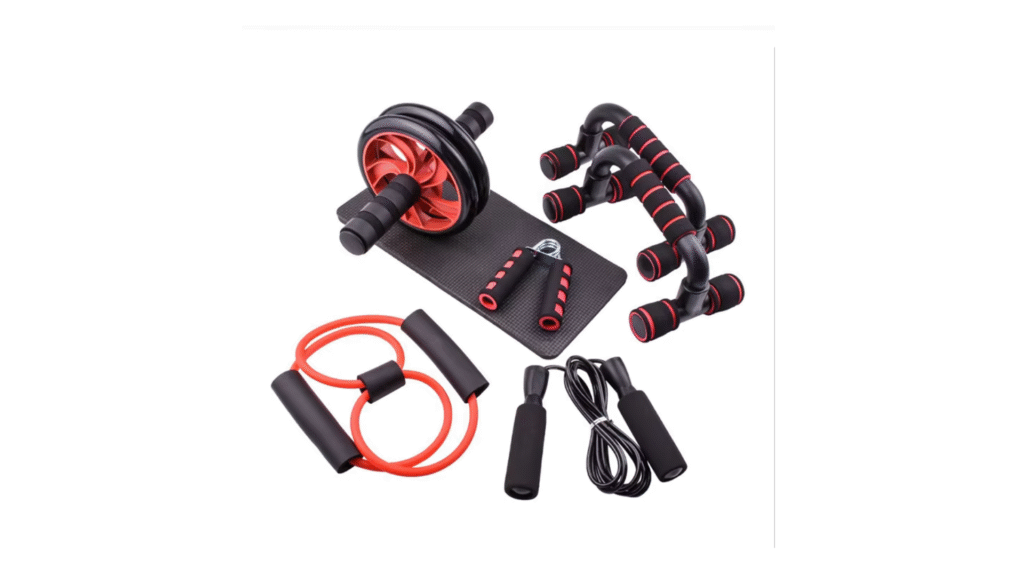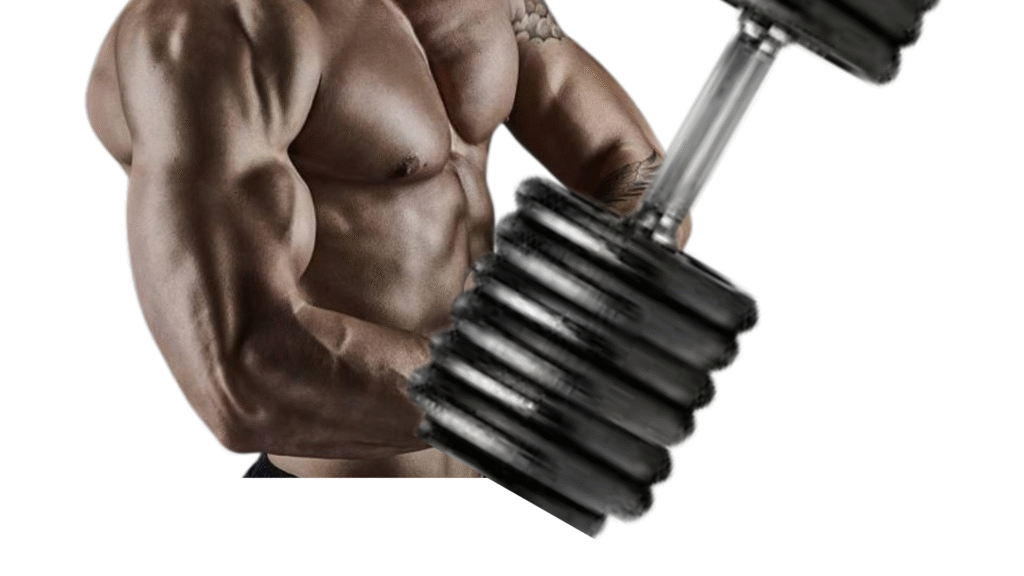If there’s one thing the past few years have taught us, it’s the value of being able to stay active at home. Gyms are fantastic, but life is unpredictable: busy schedules, commuting, or even seasonal weather in the UK and Europe can make it harder to stick to a fitness routine. That’s why more people than ever are investing in home gym equipment—whether it’s a single pair of dumbbells or a fully kitted-out garage gym.

But before you start filling your Amazon cart, it’s worth pausing to ask: What equipment do you really need? How much space do you require? And how can you build a setup that keeps you motivated long-term?
This guide covers everything: the essential home gym equipment, optional upgrades, tips for different budgets and spaces, and advice from real-life experiences so you can make your home workouts effective, sustainable, and fun.
Why Invest in Home Gym Equipment?
Let’s start with the “why.” After all, gym memberships are everywhere—so why bother creating your own fitness corner at home?
- Convenience
No commuting, no waiting for machines, no excuses. Your equipment is right there, ready whenever you are. - Cost savings
While there’s an upfront investment, over time a home gym can be cheaper than years of gym memberships. - Privacy
You don’t have to feel self-conscious trying a new exercise. You can work out in your PJs if you like—nobody’s watching. - Flexibility
Morning HIIT, lunchtime yoga, late-night strength training—your equipment works on your schedule. - Family friendly
A home setup means kids, partners, or even pets can get involved, turning exercise into a household activity

Step 1: Assess Your Space
Before buying any home gym equipment, figure out where it will live. Do you have:
- A spare room or garage? Perfect for larger machines or racks.
- A small flat? Opt for foldable or compact gear.
- Just a corner of the living room? No problem—many essentials take up very little space.
Remember: the best home gym isn’t the biggest or most expensive. It’s the one you actually use.
Step 2: Essential Home Gym Equipment
Here’s the foundation gear that works for almost everyone, regardless of fitness level.
1. Dumbbells
Versatile, compact, and timeless. Dumbbells allow you to train every muscle group. For small spaces, adjustable dumbbells are a game-changer: one set replaces 10 or more.
Pro tip: Start lighter than you think, especially if you’re new. You can always build up.
2. Resistance Bands
Affordable and incredibly versatile, resistance bands can replicate many cable-machine exercises. They’re also perfect for mobility work, warm-ups, and stretching.
Bonus: they weigh almost nothing—ideal for travel or outdoor workouts.
3. Exercise Mat
Never underestimate the value of a good mat. It cushions joints, protects floors, and makes core work, yoga, or stretching much more comfortable.
If you live in a UK flat with wooden floors, your neighbours below will thank you too.
4. Kettlebells
Kettlebells blend strength and cardio in one piece of equipment. Swings, presses, squats—you can do it all. They’re especially popular in Europe for functional fitness.
5. Jump Rope
Want effective cardio in a tiny space? A skipping rope is unbeatable. It’s portable, inexpensive, and fantastic for coordination.

Step 3: Optional Upgrades
Once you’ve built your basics, you might want to expand your collection of home gym equipment for more variety.
1. Pull-Up Bar
If you have a sturdy doorway, a pull-up bar is one of the best investments. Pull-ups strengthen your back, arms, and core like nothing else.
2. Barbell and Weight Plates
For those serious about strength training, a barbell set opens the door to squats, deadlifts, and bench presses.
Space note: You’ll need storage for plates and enough floor area for safe lifting.
3. Bench
A weight bench increases exercise variety. Combine with dumbbells or a barbell for presses, rows, or step-ups. Adjustable benches are more versatile but take up slightly more room.
4. Cardio Machines
If you have space and budget, cardio machines are a great upgrade.
- Treadmill – Popular but bulky. Foldable versions exist.
- Rowing machine – Amazing full-body workout. Many models store upright.
- Exercise bike – Very popular in the UK; excellent for low-impact cardio.
5. Foam Roller
Recovery is part of training. A foam roller helps release tight muscles, improve circulation, and reduce soreness.
Step 4: Budgeting for Home Gym Equipment
Your home gym doesn’t need to cost a fortune. Here are three realistic budgets:
Budget Setup (£50–£150)
- Resistance bands
- Exercise mat
- Jump rope
- A pair of dumbbells
Perfect for beginners or those in small flats.
Mid-Range Setup (£300–£800)
- Adjustable dumbbells
- Kettlebell set
- Pull-up bar
- Bench
- Foam roller
Balances strength, cardio, and recovery.
Premium Setup (£1,000+)
- Barbell + plates + rack
- Adjustable bench
- Cardio machine (bike, treadmill, or rower)
- Full dumbbell rack
- Resistance bands & accessories
This is a serious investment, but it’s cheaper long-term than years of gym memberships for a family.
Step 5: Making It Personal
Here’s where the human touch comes in. A home gym should feel like yours.
- Decorate your space – Add a motivational poster, plant, or even a mirror to check form.
- Play your own music – No headphones required. Blast your favourite playlist.
- Track progress visibly – A whiteboard or wall calendar keeps you accountable.
- Share the space – Invite a friend, partner, or child to join occasionally. Shared sweat = shared motivation.
Step 6: Safety First
It’s easy to get carried away, but safety matters:
- Learn proper form before increasing weight.
- Secure pull-up bars and heavy equipment.
- Use mats to prevent slipping.
- Leave space around weights for safety.
Step 7: Staying Motivated in a Home Gym
The hardest part of working out at home isn’t equipment—it’s consistency. Try these tips:
- Schedule it like an appointment.
- Dress the part: changing into workout gear flips a mental switch.
- Mix it up: alternate strength, cardio, and flexibility sessions.
- Set challenges: 30-day squat challenge, 10-minute daily HIIT, etc.
- Celebrate wins: reward yourself for hitting milestones.
Real-Life Stories: UK Home Gym Users
“I started with just a yoga mat and bands during lockdown. Over time, I added dumbbells and a pull-up bar. Now I actually prefer training at home—it saves me money and I don’t feel rushed.” – Sarah, Manchester
“My garage gym is my sanctuary. I spent about £1,200 on a barbell, rack, and bike. It seemed steep at first, but compared to my old gym membership, it’s already paid for itself in under two years.” – James, Bristol
Stories like these show that building a home gym is not about perfection. It’s about starting small and growing with your needs.
Frequently Asked Questions
What is the most essential home gym equipment?
For beginners, the essentials are dumbbells, resistance bands, and an exercise mat. These cover strength, flexibility, and bodyweight training.
How much does it cost to build a home gym in the UK?
Budget setups can start around £100, while premium setups with racks and cardio machines can exceed £1,000.
Is home gym equipment worth it?
Yes—if you use it consistently. It offers convenience, privacy, and long-term savings compared to gym memberships.
Can you get fit with just home gym equipment?
Absolutely. With the right mix of resistance training, cardio, and mobility, a home gym can deliver the same results as a commercial gym.
Final Thoughts: Building the Best Home Gym for You
The beauty of home gym equipment is its flexibility. You don’t need to recreate a commercial gym. Start small, experiment, and let your setup grow with you.
Remember: the best home gym is the one you’ll actually use. Whether it’s a single resistance band in your living room or a fully stocked garage, what matters most is moving your body regularly.
So, what’s stopping you? Grab a mat, pick up a dumbbell, and take the first step toward building a healthier, stronger version of yourself—right at home.
